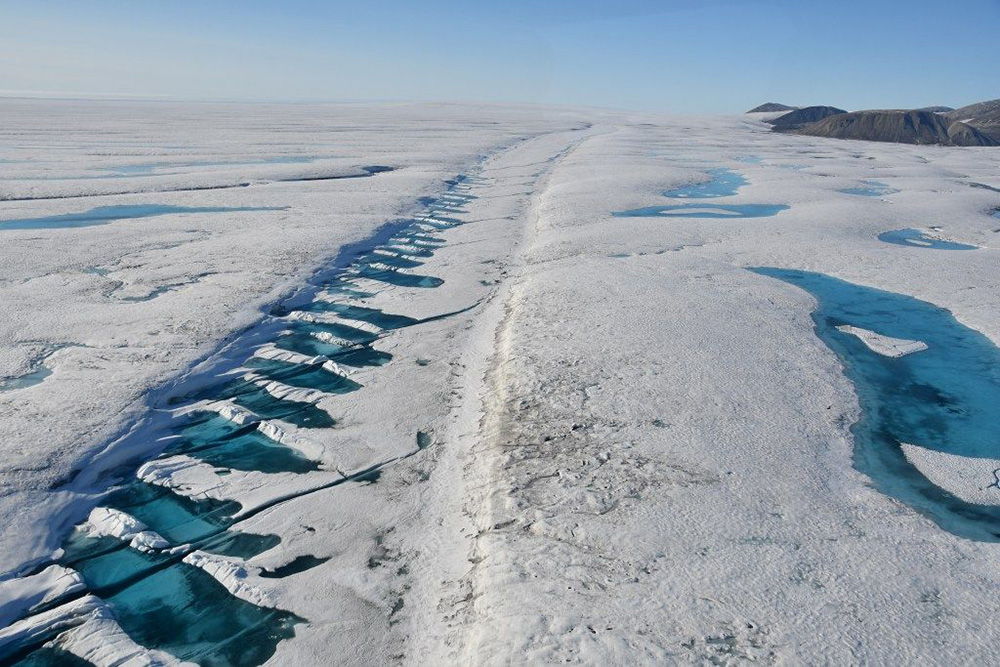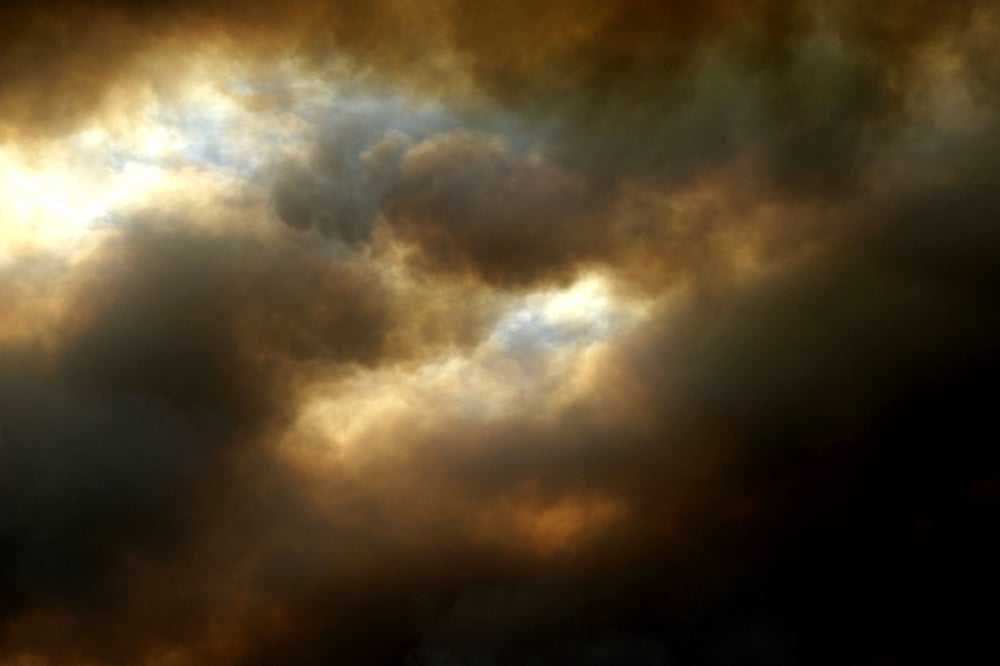- Our Final Warning: Six Degrees of Climate Emergency
- Fourth Estate (2020)
You would think that we have had quite enough doomsaying about global warming. With this book, we have indeed had our final warning. This is what we can expect if we keep pumping carbon dioxide and methane into the atmosphere, and it will be catastrophic.
That said, it’s not quite the last word. While it’s a vivid, heavily-documented account of what climate science concludes from human behaviour over the past few centuries, it doesn’t consider how that behaviour might change.
British journalist Mark Lynas evidently draws on the old maxim of physicist Richard Feynman — when you come to a conclusion, your first job is to prove you’re wrong. Lynas wrote a book in 2007 about global warming, and now he revisits it in the light of 12 years of further scientific research. He finds that his 2007 forecasts, and the science they were based on, were indeed wrong: they were far too conservative. The planet is warming faster than we thought, and climate disasters are coming much sooner.
Structurally, the book is simple and powerful: each chapter turns up the heat by just one more degree and describes the consequences if we hit that global average temperature by the year 2100. Lynas draws on the geological record as well as computer climate models, and his sources are as recent as last year. Here are some of the key points:
One degree
This is where we are now, one degree above the pre-industrial average global temperature of roughly 1850 to 1900. Greenland’s ice sheet is turning blue with meltwater lakes and streams. Half the Arctic sea ice is gone. Antarctica’s glaciers are sliding faster into the sea, and mountain glaciers everywhere are shrinking.
Extreme rainfall and flooding are becoming routine. So are heatwaves and wildfires like those currently afflicting California. Meanwhile, “ocean heatwaves” create dead zones because warm water holds too little oxygen for sea life.
Canada, like other signatories to the Paris Agreement, is committed to limit warming to 1.5 C — in effect, accepting all this as the new status quo. But as Lynas observes, no one is slowing emissions in the slightest. The Keeling curve, which measures atmospheric carbon dioxide levels, shows CO2 is now at 412.88 parts per million, and rising. So the global temperature must eventually rise to:
Two degrees
The Arctic is now ice-free in summer. Permafrost melting releases 60 to 70 billion tons of CO2 and methane into the atmosphere. The West Antarctic Ice Sheet begins to slide into the ocean. Mosquito-borne diseases like dengue move out of the tropics and subtropics into “temperate” regions.
Food production worsens, and excess CO2 makes grains less nutritious. The Amazon rainforest (with Brazilian assistance) could collapse through enormous fires into savannah or outright desert, adding still more CO2 to the atmosphere.
Three degrees
The West Antarctic Ice Sheet is in full collapse, and so is the East Antarctic. Sea levels rise by 15 metres or more, driving hundreds of millions to higher ground. (What they leave behind will likely poison the oceans still more.)
A vast swathe of the planet from North Africa to Southeast Asia endures days and weeks of temperatures and humidity that kill unprotected humans in a matter of minutes. Among the few places with sufficient rainfall to grow crops: “Western Canada, Eastern Canada (but not the prairie provinces, which dry out).”
Meanwhile, says Lynas, megadroughts will dominate the U.S. right up to the border. “Perhaps,” he says, “Canadians will be the ones building a border wall in the three-degree world.”
Not that it will do us much good. Rising temperatures will reduce crop yields. “Even Canada — once the great hope of future food production — will show production declines of wheat, canola and maize once global temperatures pass 2.5 C.”
He goes on to say: “In my view, worldwide food shortages are the most likely trigger of large-scale civilizational collapse in a three-degree world.” Furthermore, he warns, “entering the three-degree world risks pushing the global heating process beyond humanity’s control.”
Four, five and six degrees
At four degrees, fatal heatwaves will hit 250 days a year from 30 degrees north of the equator to 30 degrees south. We are in true “Hothouse Earth” conditions. The Persian Gulf in summer sees highs above 60 C (140 F). Something similar happens to the North China Plain, home of 500 million people. In many parts of the world, storms lift fungal spores out of the dust and infect people with valley fever, which already afflicts parts of the U.S. southwest. Mass extinctions of plants and animals are inevitable.

At five degrees we are in a “super-greenhouse world.” Each country is trying to feed its own people, with nothing left over to trade. “Climate apartheid” will try to protect the rich from millions of climate refugees. The western side of the Canadian Rockies might still get enough rainfall and moderate temperatures to permit farming, as will the southern tip of South America. “Scandinavia still has a relatively equable climate,” Lynas says, “albeit one uncomfortably shared by 100 million refugees from southern Europe and the Middle East.”
But not for long: “At five degrees we are approaching the end of life on Earth as we know it. The poles are in meltdown, and complex human societies have long since passed the point of collapse.” Six degrees would merely bake the rubble.
Lynas foresees a truly bleak future, comparable to the Permian extinction of 250 million years ago that erased 90 per cent of all life on Earth. But he pins his argument on one dubious premise: that like robots we will keep pumping carbon into the atmosphere right up to the year 2100, perhaps in quantities enough to heat the planet by six degrees.
Yes, we’ve already started melting the permafrost and burning the Amazon and Siberia’s forests. But by two degrees, if not sooner, the warming climate will more likely destroy our carbon economy, whether we meet our Paris obligations or not.
We’re in the midst of a pandemic that temporarily reduced carbon emissions very dramatically last spring. It won’t be the last pandemic, or the worst. A few days of 60 C in the Persian Gulf could demolish oil exports, bringing industries to their knees around the world. Crop failures in India, Pakistan and China would give their governments something to think about that couldn’t be solved by boosting their GDP or nuking one another.
More likely, those governments would invest in nuclear and renewable power to desalinate seawater, shelter their people indoors and feed them synthetic foods. Every nation’s long-term goal would be to find a way to help cool the planet, preserve ecosystems and save the genomes of plants and animals for a far-distant future when the world is cool again. Slowly, painfully, the rush to destruction would slow and pause.
And in schools, children would be taught about the fools who almost killed the world with their belief in endless, carbon-fuelled growth. ![]()
Read more: Environment
















Tyee Commenting Guidelines
Comments that violate guidelines risk being deleted, and violations may result in a temporary or permanent user ban. Maintain the spirit of good conversation to stay in the discussion.
*Please note The Tyee is not a forum for spreading misinformation about COVID-19, denying its existence or minimizing its risk to public health.
Do:
Do not: